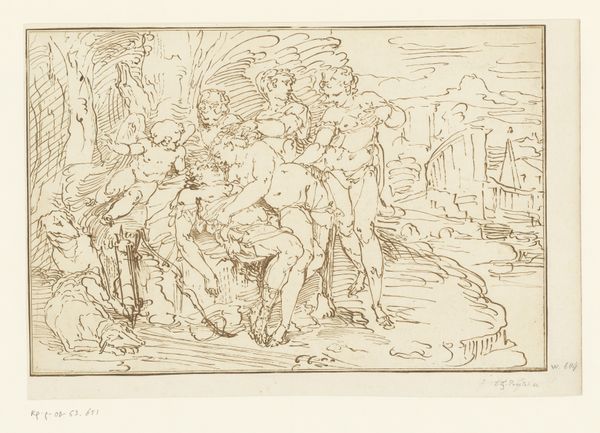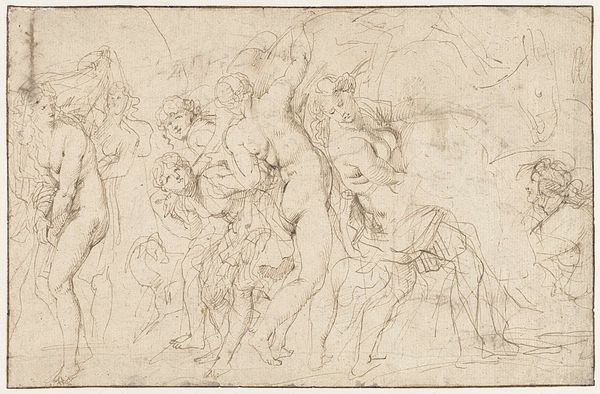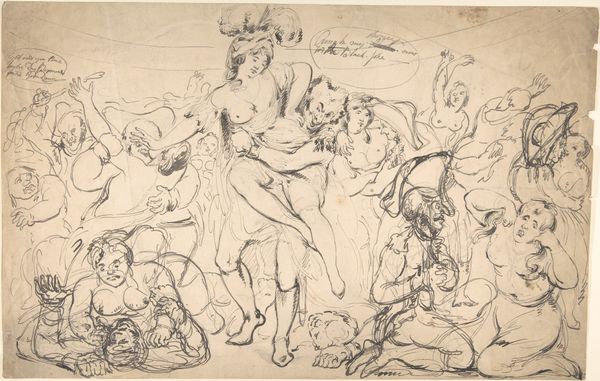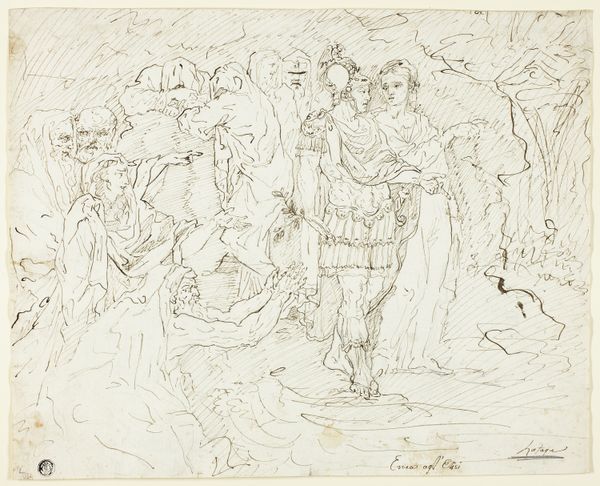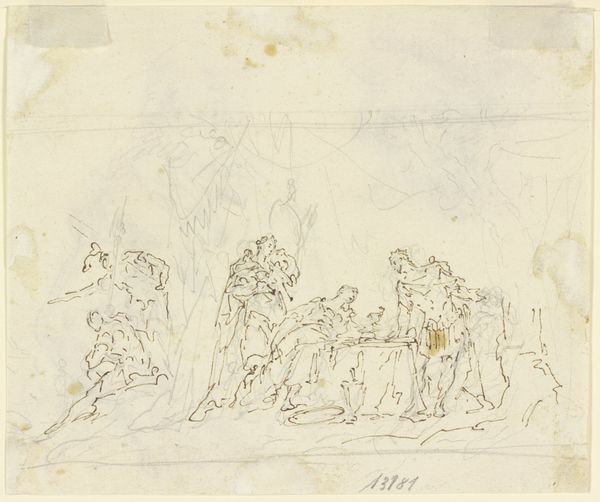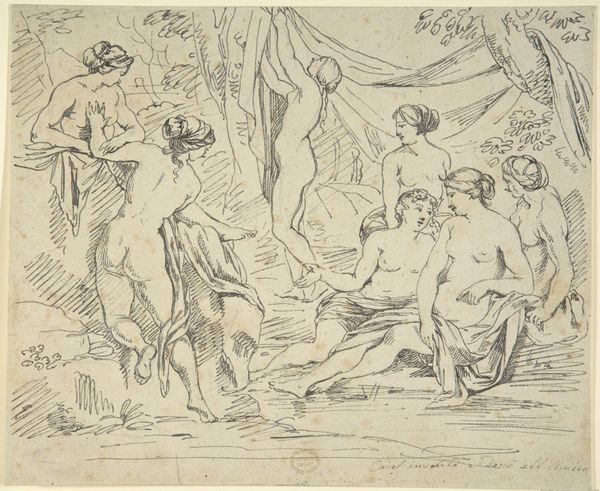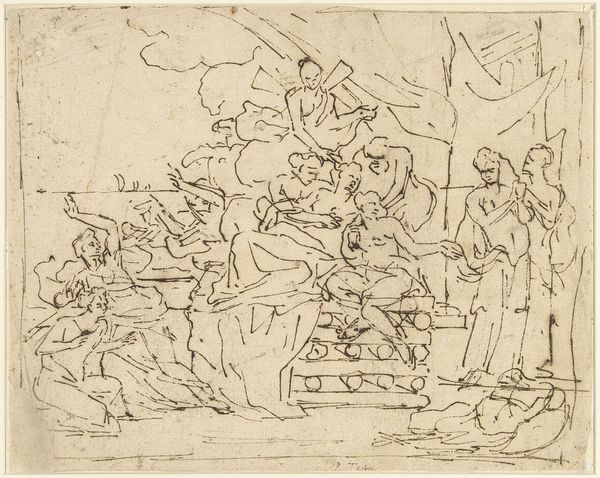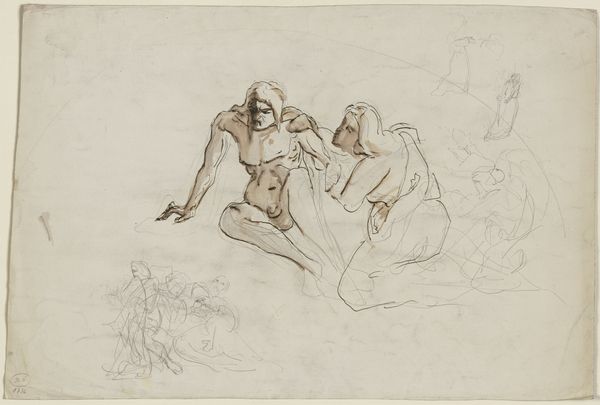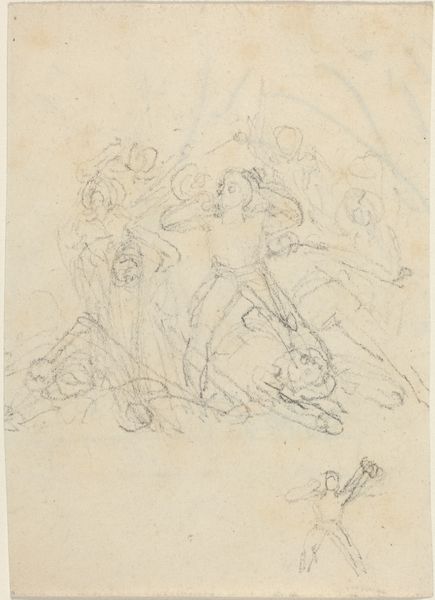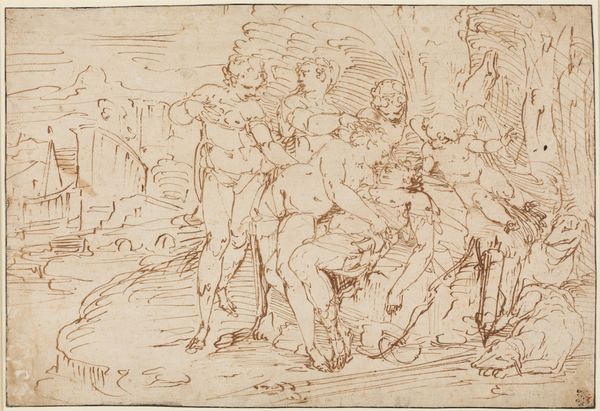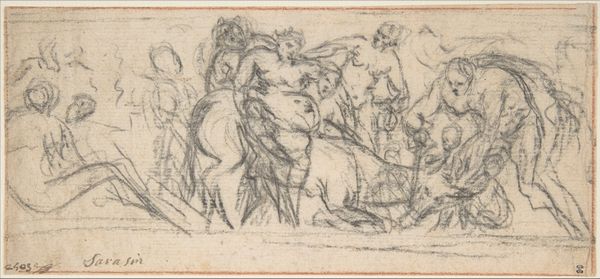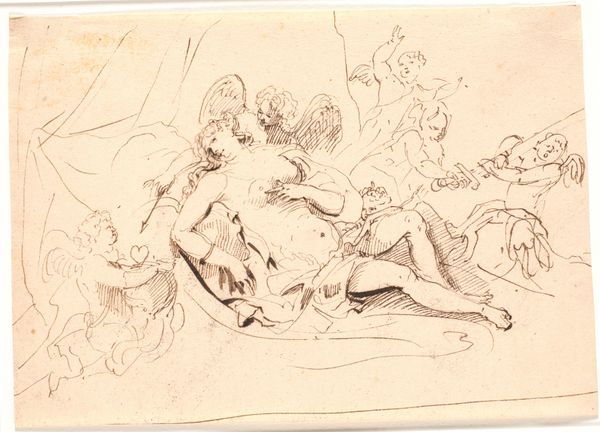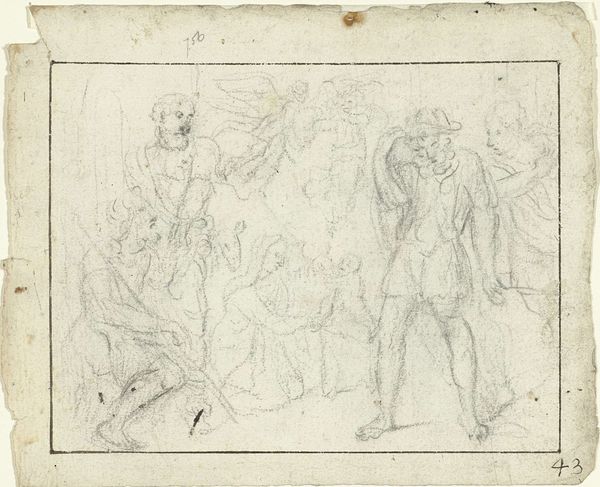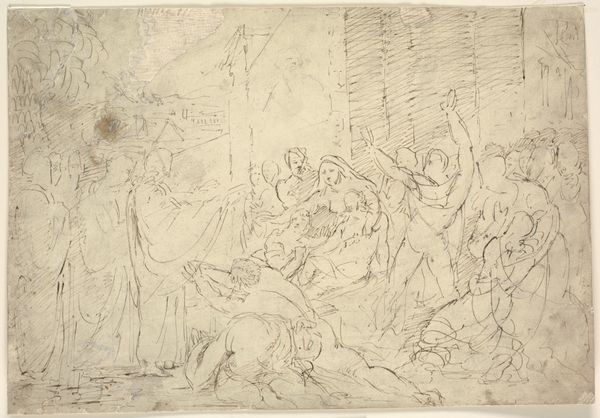
drawing, paper, ink
#
drawing
#
high-renaissance
#
paper
#
ink
#
ink drawing experimentation
#
genre-painting
Copyright: Public Domain
Editor: We're looking at Parmigianino's "Adoration of the Shepherds," dating from around 1524 to 1526. It’s an ink drawing on paper, and it strikes me as both energetic and dreamlike. There's a real sense of movement in the lines, yet the scene feels quite still. What stands out to you from a formal perspective? Curator: The composition immediately commands attention. Notice the dynamic arrangement of figures; they aren't simply placed, but intricately interwoven. The spatial ambiguity achieved through line weight and density creates an intriguing tension. Parmigianino masterfully uses hatching and cross-hatching to define form, yet there is also a lightness of touch. Editor: The lines certainly feel spontaneous. Did Parmigianino use preliminary sketches to achieve such fluidity? Curator: One suspects so. Though this drawing exhibits a deceptive air of spontaneity, the placement of the figures and their interaction indicate a carefully considered underlying structure. What effect does the absence of color have on your reading of the piece? Editor: Without color, I’m focusing intensely on the lines themselves, and on the forms they create. It's fascinating to see how much depth and emotion can be conveyed with such minimal means. Also, without color to distract me, I keep getting drawn back to negative spaces in this work. Curator: Indeed. These contribute significantly to the work's dynamism, highlighting Parmigianino's skilled manipulation of figure-ground relationships. He masterfully balances detailed rendering with areas left intentionally bare. These spare lines add to a dynamic sense of completion and incompletion in this piece. Editor: I hadn't thought of it that way. It’s like the sketch invites me to fill in the missing pieces, creating my own experience of the adoration. This insight has altered my approach to reading the piece—thank you. Curator: Likewise; noticing your perspective highlights the power of simplicity to ignite individual contemplation within a work.
Comments
No comments
Be the first to comment and join the conversation on the ultimate creative platform.
